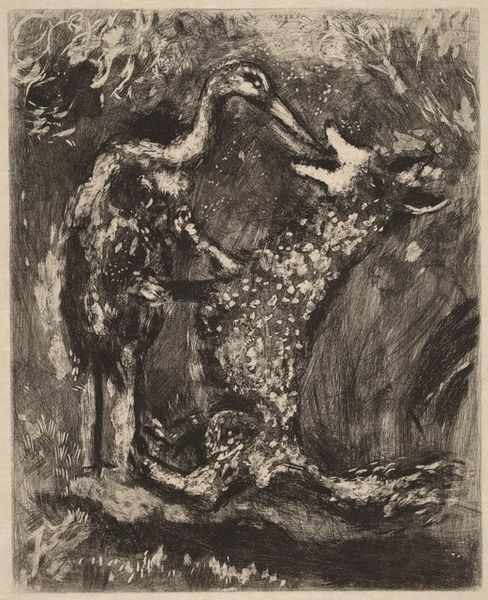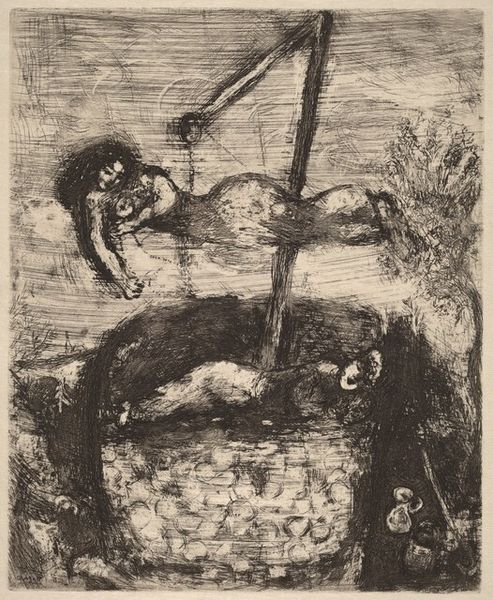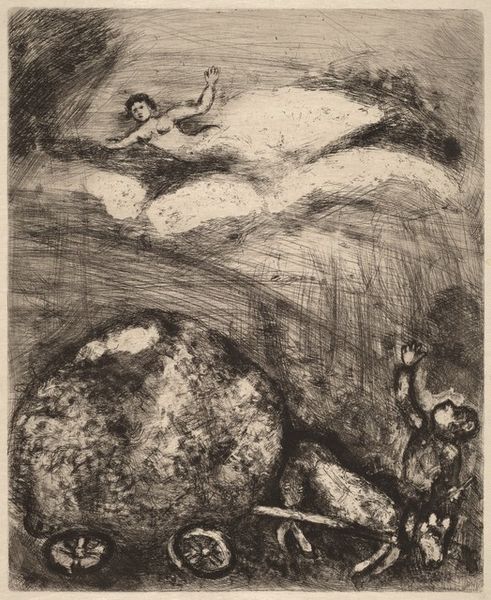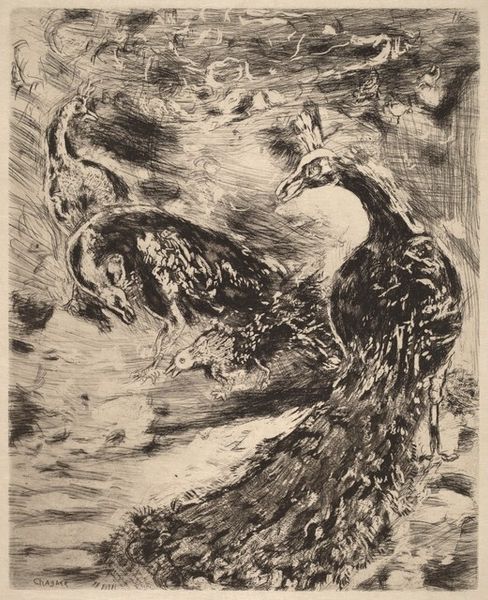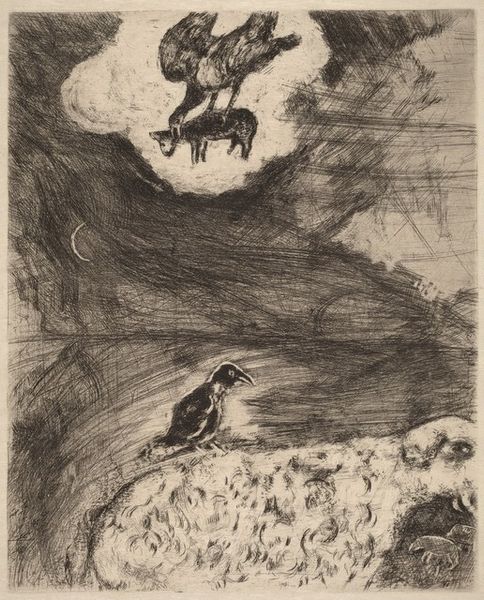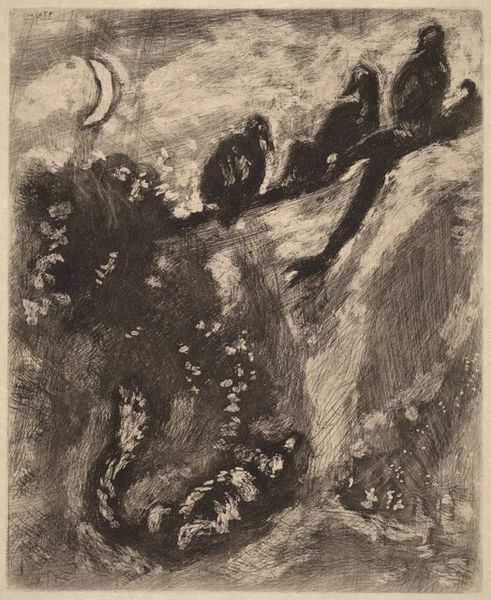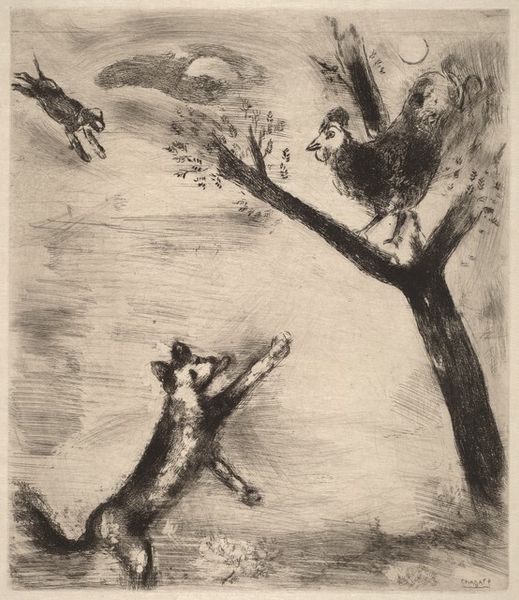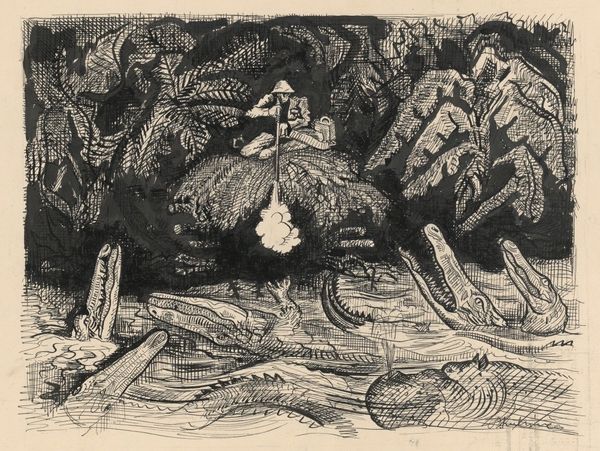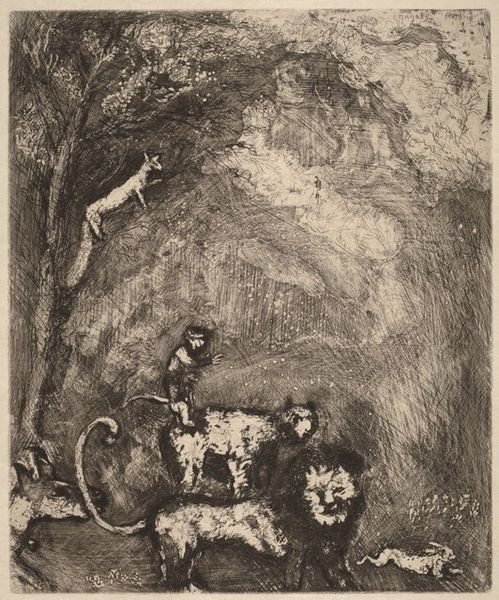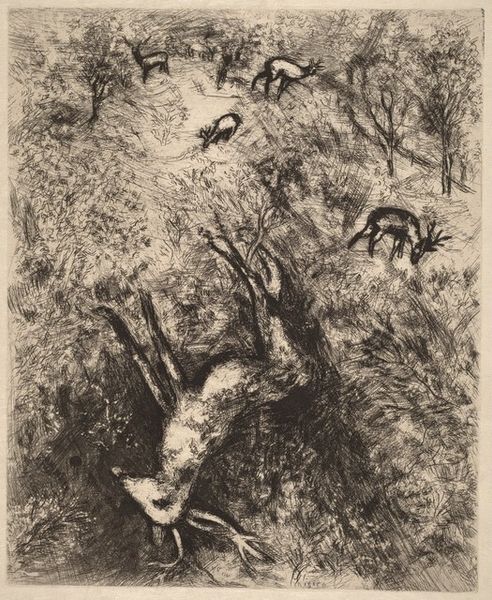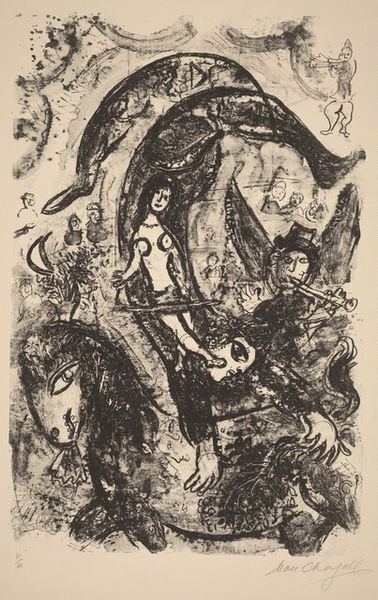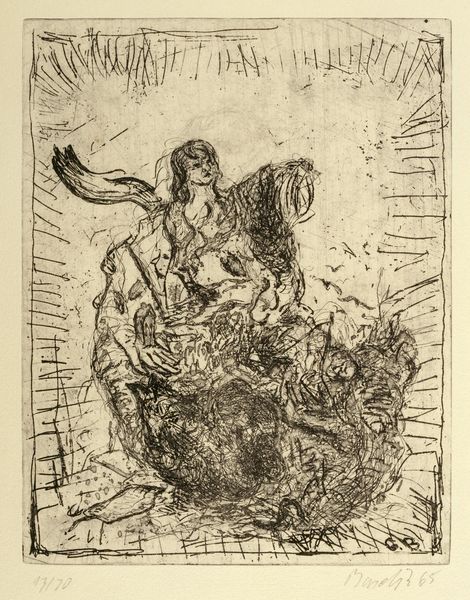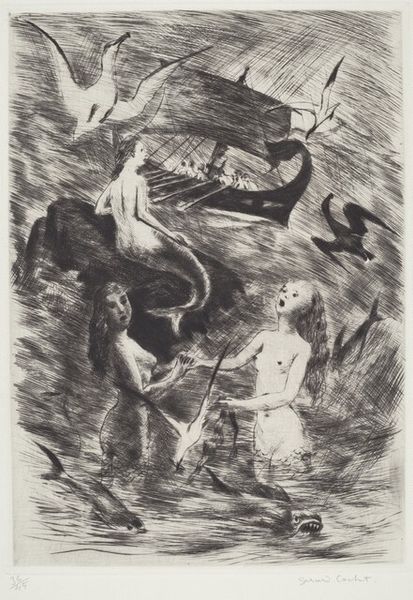
Copyright: National Gallery of Art: CC0 1.0
Curator: I’m struck by the vulnerability emanating from Marc Chagall’s "The Bird Wounded by an Arrow", created between 1927 and 1930. There's a profound sense of suffering, wouldn't you agree? Editor: Indeed. The wounded bird lying prone immediately captures a melancholic mood. The monochromatic medium of etching and ink only enhances that somber feeling. It evokes, at least for me, an overwhelming feeling of despair. Curator: Well, consider the time in which Chagall created this work. Following the Russian Revolution and amidst growing antisemitism, Chagall's identity as a Jewish artist living in exile heavily influenced his work. Perhaps the wounded bird is a representation of collective suffering, of the targeted and marginalized. Editor: I understand that perspective, certainly, the context adds another layer. But I wonder, is the image more about the figure poised above, the hunter, a youthful aggressor holding bow and arrow? Who gets to determine the roles in these violent episodes? Is it not interesting that Chagall places the oppressor as child? Is this naivete or learned behaviour? Curator: That's a valid interpretation. Seeing the hunter as an adolescent introduces a new layer of complexity regarding the innocence and corruption of youth. One must think, however, about the power dynamics and how they play out within systems of oppression and who ultimately benefits. This is, after all, coming out of a very charged political period, perhaps this bird's suffering echoes broader systemic issues of oppression and resistance? Editor: And speaking to your interpretation, maybe Chagall is showing that those cycles of violence begin earlier, or are so pervasive they appear almost natural in our societal landscape. Regardless, it makes one consider the role and the culpability, or perhaps innocence of those participating. I have more questions than answers, certainly! Curator: I find myself lingering with the idea of empathy. As this work reflects the enduring need for resistance in the face of injustice, the symbolism becomes increasingly important. Thanks for sharing your reading; this allows a broader range of inquiry. Editor: Thanks to you, too. Art should serve as a conduit for critical discourse; the political history informs our understanding and is a powerful entry point to interpret work such as this.
Comments
No comments
Be the first to comment and join the conversation on the ultimate creative platform.
